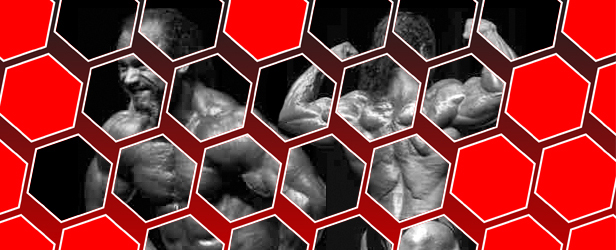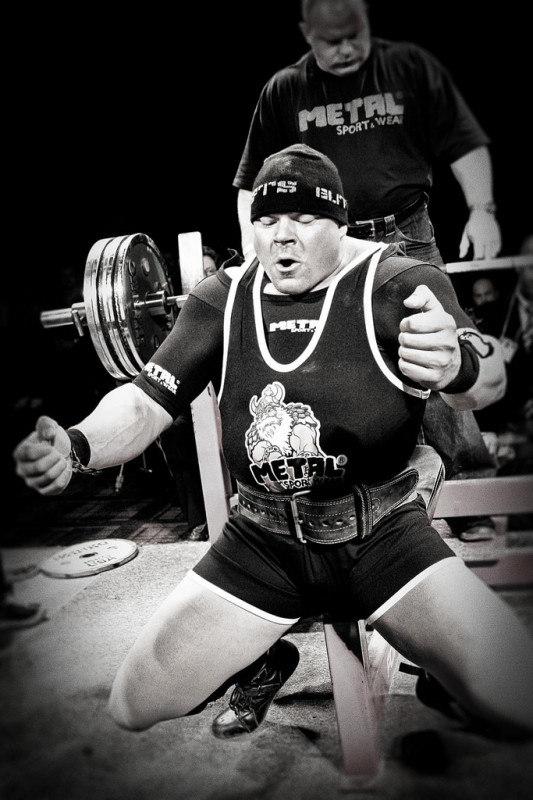
K.I.S.S.
Sometimes we forget what we already know, and I’m no exception.
On the first day of class, I often ask my students to think back on an important course they took. This could be anything from a course they took in college or high school to an adult education course or even something like a CPR class. I then ask them how many concrete and meaningful concepts they can actively recall. Try this yourself as you read this. (Think of a favorite course and then try to regurgitate as many lucid points of learning as you can.)
Unless you have savant-like recalling abilities, you probably came up with about a half-dozen (at best) basic concepts despite how formative that particular educational experience was for you. Given the results of this exercise, I repeatedly hammer home the most important take-home concepts during the courses I teach (e.g., homeostatic equilibrium or specificity of training). This way, there is some hope that these will be the concepts and ideas that my students remember...even years down the road.
Focus, man. Focus.
Unfortunately, with my zeal for such in-depth exploration of a given topic, I tend to dissect the finer details of a subject...and thus create information overload. So, rather than litter this particular article with citations supporting each and every statement I make (and I do this, in part, as a way of leaving bread crumbs of exploration for the scientifically curious), I’d like to focus on just one research study–one that explores a very important notion for bodybuilders and strength athletes.
The take-home message? Your mind is your most powerful tool in generating the physique and the strength you seek. You already knew this, of course, but the study I’d like to tell you about demonstrates it  in ways you've probably not seen or heard of before.
in ways you've probably not seen or heard of before.
In decades long past—before the advent of the internet, Medline, massive research funding, and intensive (but warranted) scrutiny of research proposals, scientists performed fascinating studies that you have never see done in today’s research climate. A favorite study of mine from the 1920s was performed by Alfred Chanutin, as well as his colleague, Loren Guy. These two men were the only subjects in a multi-month study of creatine metabolism. They spent months following a creatine (meat)-free diet, collecting daily urine and feces samples, and mixing a crude and bitter creatine powder in their morning tea (1). These guys were truly “in the trenches” doing the research on themselves and experiencing the intervention up close and personal.
“Some Factors Modifying the Expression of Human Strength”
Before I get to the study (2), note that it was performed in the early 1960s. (This will make sense when you read what was done). Entitled “Some Factors Modifying the Expression of Human Strength,” the paper was published in the Journal of Applied Physiology (JAP), a highly regarded and oft-cited source in the exercise physiology community (3). This is not to say that every study found in JAP is flawless (4). Truth be told, this particular set of experiments is lacking in some areas (e.g., the use of placebo controls), but it’s worth noting that the report is far from a simple anecdote or scientific mythos.
The authors' (Ikai and Steinhaus) framework for understanding the “expression of human strength” is encapsulated thus:
"It is appropriate to speak of a physiologic and psychologic limit. Capacity is always the undetermined measure of the former. Performance is always limited by the latter.”
In other words, the psyche limits the body. With a series of experiments, they set out to unleash these psychological restraints on human strength—“disinhibiting” them in their subjects in a variety of powerful ways.
Train like an Amp’ed-up, Screaming Drunken Fool with a Gun to Your Head.
Volunteers were strapped into an isometric elbow flexion dynamometer (basically a static curls strength-testing machine) and asked to perform brief, all-out maximal static contractions each minute for 30 minutes. These daring human guinea pigs were well-practiced in this (familiarized), and they would typically lose about 10 percent of their strength over 30 minutes of the baseline, intervention-free testing.
After this, however, Ikai and Steinhaus let the poop fly. They subjected their lifters to the following trials (for which I’ve coined some nicknames):
- What The F#ck?: Without any warning to the subjects, one of the researchers standing just behind them would fire off a .22 caliber starting pistol in the few seconds just before several of the maximal efforts.
- Let me HEAR YOU!: When they reached their final maximal effort during the gunshot (“What the F#(*?...) trial, subjects were asked to shout as loudly as possible.
- Get your Buzz On: After five baseline maximal efforts, these troopers drank a shot of 190-proof pure grain alcohol before the next 25 efforts.
- Ultimate Pre-Workout: Subjects gobbled down 30 mg of amphetamine sulphate 25 minutes before a “blistering” 30-minute round of maximal pulling.
- All Natural Pre-Workout: After five baseline pulls, they received an intramuscular injection of adrenaline and finished the rest of the maximal efforts.
- Limitless Subjects were hypnotized: (No, they were not asked to quack like ducks or take their clothes off.) After five baseline pulls, they performed maximal efforts under hypnosis—during post-hypnotic suggestion (both when it was suggested that they were very weak and that they were very strong, respectively), and afterwards when awake and released from any hypnotic control.
Guess What?...
It all worked. The alcohol, speed, adrenaline, shouting, surprise gunshots, and especially the hypnosis—everything increased (the expression of) strength to some degree, with hypnosis having the greatest effect.
In keeping with my premise for this article (Keep It Simple, Scott), I’ll spare you the in-depth unraveling of the mechanisms for these findings, barring the most important that is. In general, they ascribe the better performance brought on by the stimulants—the euphoria of a small amount of alcohol, shouting, gunshots, and hypnosis—to reflect inhibition of inhibition...in other words, “disinhibition.” One particular subject, the one most like you and me, ties this argument together for them quite nicely.
He Ain’t No Quackin’ Duck!
They give special explanation in regards to the subject who was an “experienced weight lifter” and who was also so skeptical of hypnosis that he “set out to disprove it.” During baseline testing (before being hypnotized), he put forth an impressive “in your face” pulling effort that produced more than double the average force of the other subjects when hypnotized.
It took nearly two hours to finally hypnotize him, but it seemed to work. He pulled so hard while hypnotized that he nearly launched himself out of the testing chair, and the post-hypnotic suggestion that he was weak played out beautifully...his force plummeted. However, hypnosis did not improve his un-hypnotized maximal baseline “I’ll show you” efforts.
Maybe He Does Quack Just a Little?
You might be thinking, “Well, maybe he wasn’t really hypnotized. I was hypnotized at a party once, and I was totally in control. Yeah, I was sitting in that other guy’s lap, but I knew what I was doing the whole time…” Well, to ensure hypnosis was genuine, Ikai and Steinhaus report the following:
“To satisfy ourselves and him that he really had been hypnotized, he was told that the hypnotist would brand his hand with a red-hot poker and that this would cause a blister to form. When he was touched with the hypnotist’s closed fountain pen, he screamed. The blister that appeared within the hour took a week to heal and served to convince the subject of the reality of hypnosis (2).”
Do You Quack, Too?
What “releases inhibitions” is different for everyone. One sees this in the gym, at meets, and during strongman competitions. Some lifters have laser-like but quiet focus, while others become un-caged (disinhibited) “animals” that scream to high heaven. Ikai and Steinhaus mention this specifically when they say, “The loudly voiced call of ‘Allah’ by Arab weight lifters and the battle cry often associated with advancing armies may well be the inhibitors of inhibitions that win contests on the battlefield and turn cowards into heroes.” In other words, the experienced lifter in their study had trained his mind to release inhibitions to the extent that is typically only possible with hypnosis.
The authors recognize the complexity of what holds us back (or drives us) in the gym, and they show how these psychological factors can be pinpointed with the details conveyed with hypnotic suggestion. One of their subjects had been teased growing up because she was quite athletic (remember, this was published over 50 years ago), thus making her associate physical prowess with social disgrace. Thankfully, a hypnotic suggestion that lifted this negative association more than doubled her pulling strength.
The Bottom Line
Let me reassure you that the take-home message here is not to start packing amphetamines, shot glasses, adrenaline injections, or starter pistols loaded with .22 caliber blanks in your gym bag. Depending on your gym, yelling “as loudly as possible” during your last rep might also ensure that that particular set is the last one at that facility.
The bottom line here is that there are a multitude of strategies for neurological disinhibition, and your mind is ultimately the gateway for expressing your physiological strength potential.
Given ethical and legal issues, I would not hold your breath in wait for large-scale research projects that further investigate the effects of illicit and psychoactive drugs (5) with or without hypnosis (6) on muscular performance. This is one reason why I think unique research gems like this study are invaluable. If you don’t feel the same way, maybe we can hunt down an aging weight lifter and hypnotist who would be happy to introduce you to a fountain pen that doubles as a “red-hot poker.”
References
- Chanutin, A., The fate of creatine when administered to man. J.Biol.Chem., 1926. 67: p. 29-41.
- Ikai, M. and A.H. Steinhaus, Some factors modifying the expression of human strength. J Appl Physiol, 1961. 16: p. 157-63.
- American Physiological Society. Impact Factors. 2012 [Accessed 12.9.13]; Available from: http://www.the-aps.org/mm/Publications/Journals/Impact-Factors.html.
- The European Association of Science Editors (2007) The EASE Statement on Inappropriate Use of Impact Factors. http://www.ease.org.uk/publications/impact-factor-statement
- Clarkson, P.M. and H.S. Thompson, Drugs and sport. Research findings and limitations. Sports Med, 1997. 24(6): p. 366-84.
- Barber, T.X., The effects of "hypnosis" and motivational suggestions on strength and endurance: a critical review of research studies. Br J Soc Clin Psychol, 1966. 5(1): p. 42-50.











